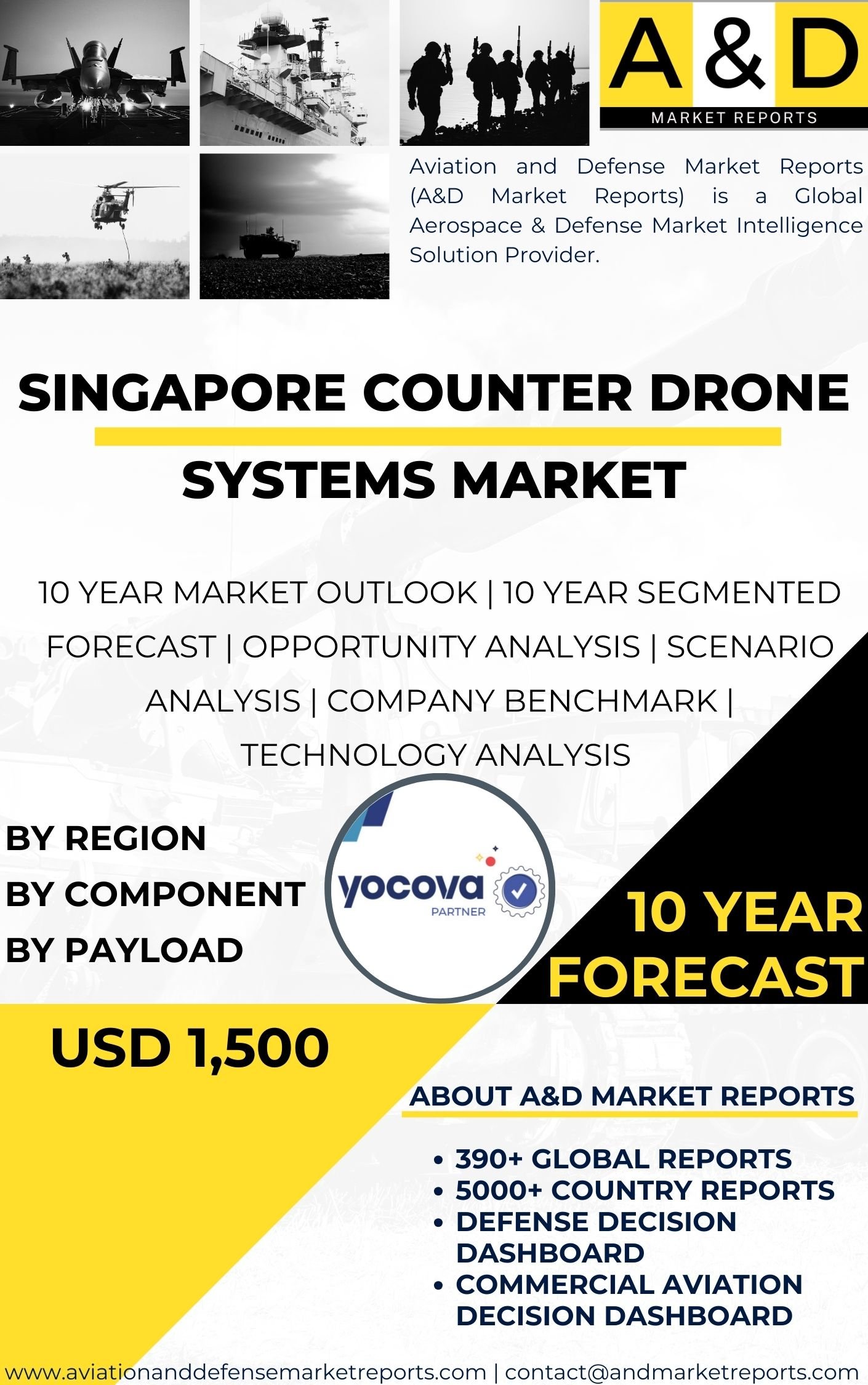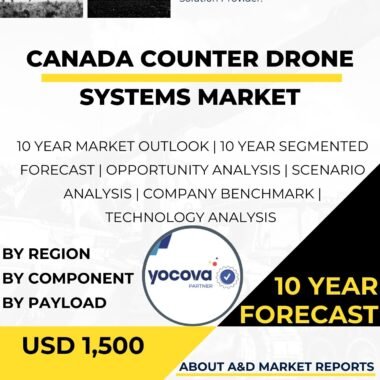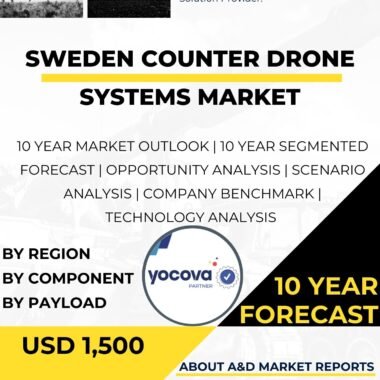Description
The counter-drone systems market in Singapore has experienced significant growth and development in recent years, reflecting the country’s commitment to enhancing its security and safety measures against the increasing threat posed by unmanned aerial vehicles (UAVs) or drones. As a small and highly urbanized nation in Southeast Asia, Singapore faces unique security challenges, necessitating the adoption of advanced counter-drone technologies to protect critical infrastructure, public safety, and national security.
The rapid proliferation of commercial and consumer drones has led to their misuse by malicious actors, posing potential threats to public safety, privacy, and national security. Criminals and terrorists may use drones for illegal activities, such as smuggling contraband, conducting surveillance, or carrying out attacks. As a result, the demand for effective counter-drone systems has grown significantly in Singapore and around the world.
Counter-drone systems are designed to detect, track, and neutralize unauthorized drones in a controlled manner. These systems utilize a combination of sensors, radars, cameras, and advanced software algorithms to identify and mitigate drone threats. The integration of counter-drone systems into Singapore’s security infrastructure is critical to safeguarding sensitive areas, including airports, military installations, government buildings, and public events.
Singapore has recognized the importance of countering the drone threat and actively invests in state-of-the-art counter-drone technologies. The country’s commitment to technological innovation and indigenous defense production extends to the development of counter-drone systems that cater to Singapore’s specific security needs.
Singapore’s defense industry actively participates in research and development initiatives, contributing to the creation of cutting-edge counter-drone technologies. The development of indigenous counter-drone systems allows Singapore to enhance its security capabilities while also fostering technological expertise and self-reliance.
Furthermore, Singapore collaborates with international defense companies and research institutions to access advanced counter-drone technologies and expertise. These partnerships enable Singapore to stay at the forefront of counter-drone technology and benefit from global innovation.
The counter-drone systems used in Singapore are designed to be agile, versatile, and adaptable to different environments. They can be deployed in fixed installations, mobile units, or even carried by security personnel to provide immediate protection against drone threats.
One of the counter-drone solutions used in Singapore is drone detection radars. These radars provide early warning by detecting drones at a distance and tracking their movements in real-time. The data from drone detection radars can be integrated into a central command and control system, enhancing situational awareness and enabling timely responses to potential threats.
In addition to radars, Singapore also employs optical and infrared sensors to complement the drone detection capability. These sensors can provide visual confirmation of detected drones, aiding security personnel in making informed decisions.
Once a drone threat is identified, Singapore’s counter-drone systems offer various response options, including jamming and electronic countermeasures. Jamming disrupts the communication link between the drone and its operator, causing the drone to lose control or return to its point of origin. Electronic countermeasures can also neutralize a drone’s GPS or navigation systems, rendering it ineffective.
The counter-drone systems in Singapore are designed to minimize the risk of collateral damage or interference with legitimate communications and systems. This ensures that the counter-drone response remains precise and focused on neutralizing the unauthorized drone threat while preserving the integrity of surrounding infrastructure and communication networks.
Singapore’s investment in counter-drone technologies aligns with the country’s commitment to public safety and national security. As drones become increasingly accessible and affordable, the threat they pose continues to grow, necessitating continuous advancement in counter-drone technologies.
The adoption of counter-drone systems also extends to the protection of critical infrastructure, including airports, power plants, and major events. The presence of counter-drone systems provides an added layer of security, ensuring that these essential facilities remain safe from potential drone threats.
As the drone threat landscape evolves, Singapore’s counter-drone capabilities will continue to evolve to meet emerging challenges. The country’s proactive approach to security, technological innovation, and international collaborations positions Singapore as a key player in the global counter-drone systems market.
In conclusion, the counter-drone systems market in Singapore has experienced significant growth, driven by the country’s commitment to enhancing security and safety measures against the increasing drone threat. Singapore recognizes the importance of effective counter-drone technologies in safeguarding critical infrastructure, public safety, and national security.
The country’s focus on technological innovation, indigenous defense production, and international collaborations has allowed it to develop cutting-edge counter-drone systems that cater to its specific security needs. The continued investment in counter-drone technologies will play a vital role in maintaining Singapore’s security and protecting its strategic interests in an evolving security landscape. These counter-drone systems are crucial assets in Singapore’s efforts to maintain public safety and national security in the face of drone-related challenges.




